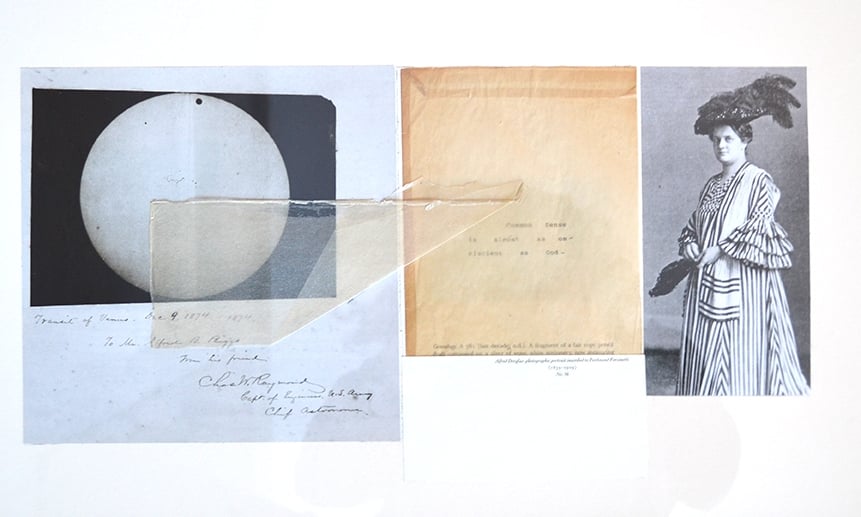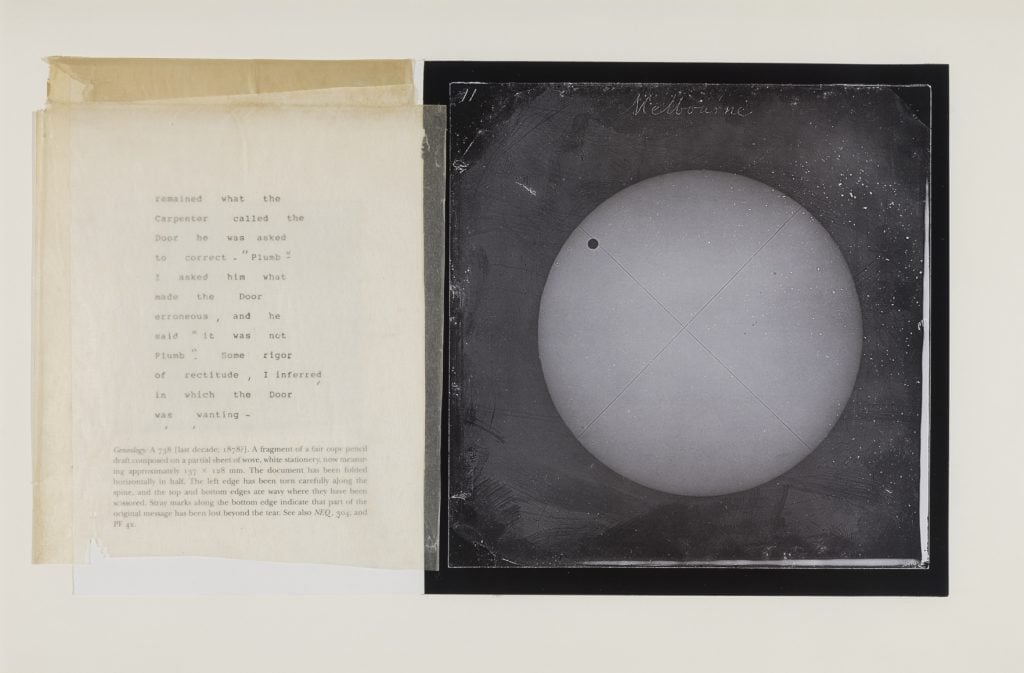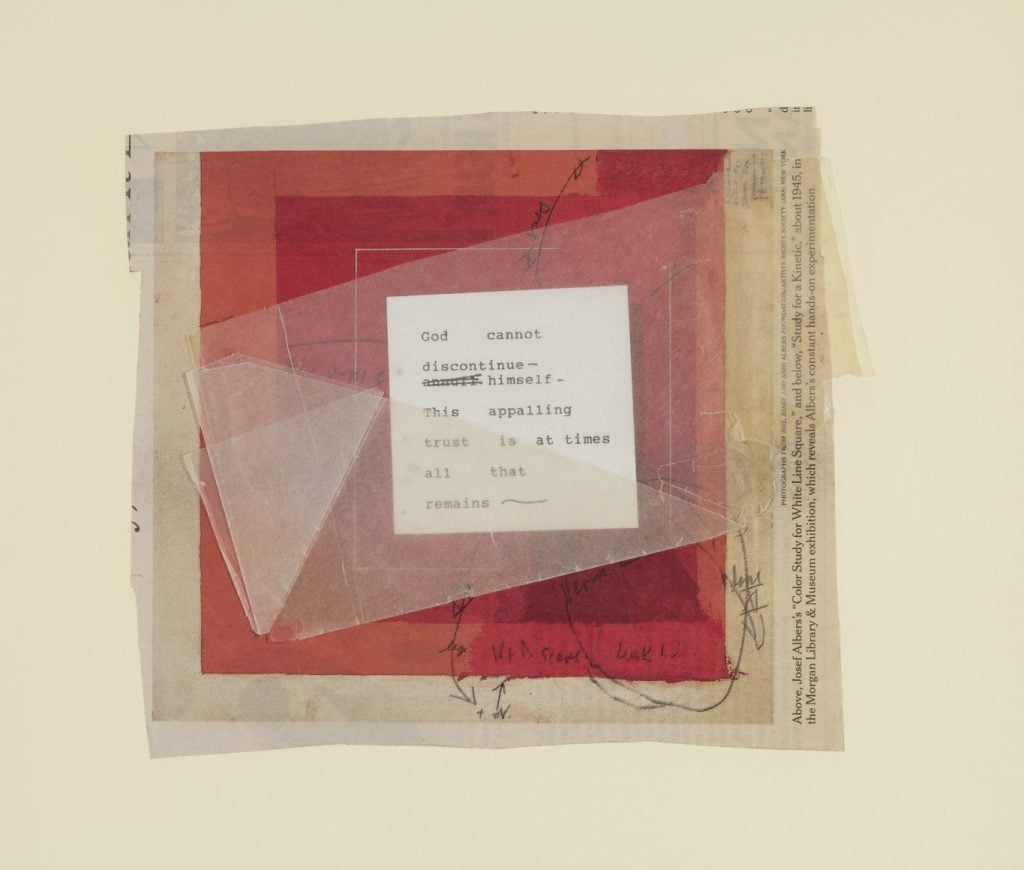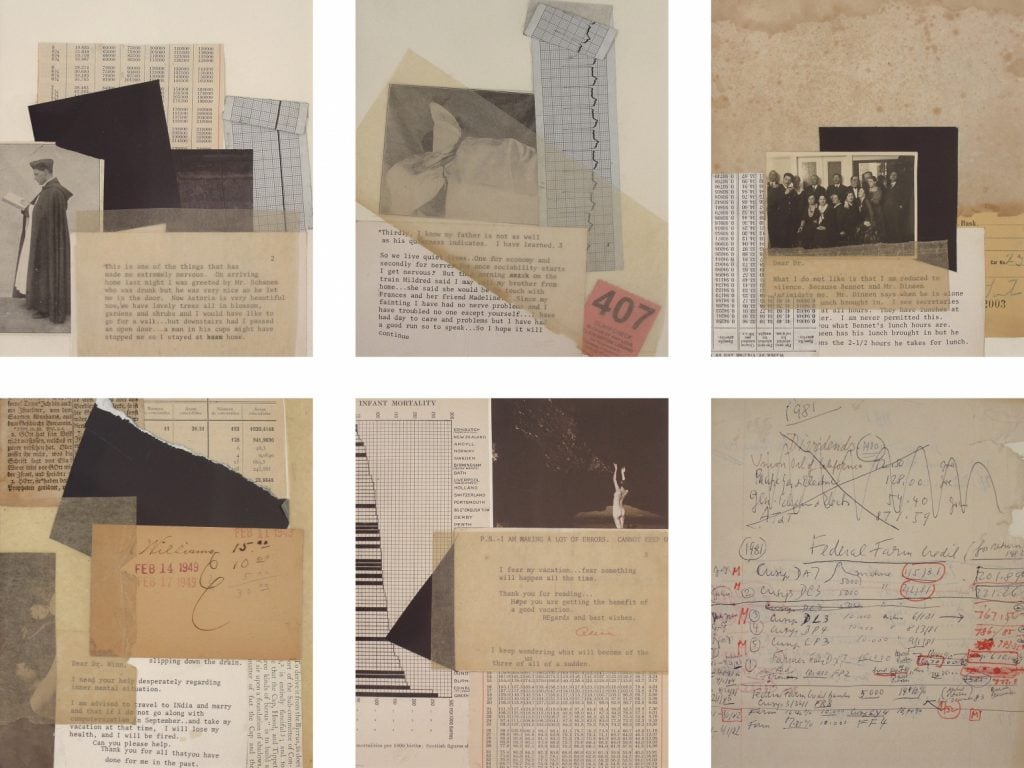Art World
Late Journalist Janet Malcolm, Who Thought Artists Didn’t Have Anything Valuable to Say, Was Also an Artist—See Her Work Here
Her most famous series of collages were inspired by Emily Dickinson's poems.

Her most famous series of collages were inspired by Emily Dickinson's poems.

Katie White

Janet Malcolm, the revered reporter, longtime New Yorker staff writer, and author of The Journalist and the Murderer, died on June 18 at the age of 86 from lung cancer.
Though famed for her unflinching observations and truth-seeking ethos, Malcolm also worked quietly but devotedly as a collage artist and photographer for decades. She is said to have adopted the medium of collage while writing a profile of the artist David Salle. (She also wrote frequently on photography, including in her 1980 book Diana & Nikon, which looked at the work of Diane Arbus and Sally Mann, among others.)

Janet Malcolm, Abyss (from The Emily Dickinson Series) (2013). Courtesy of Bookstein Projects.
In her lifetime, Malcolm’s collage works were featured in several solo exhibitions, including with New York’s Bookstein Projects (formerly Lori Bookstein Fine Art). Malcolm’s most famous works, “The Emily Dickinson Series,” were presented there in 2014.
The series spliced together cut-outs of the 19th-century American writer’s “fragment” poems and positioned bits of language amid found photographs, clippings from astronomy books and atlases, and other various ephemera.
Her collages are somewhat austere in character, dominated by imagery in blacks, whites, and grays, and possess a spare, observational quality.

Janet Malcolm, Appalling Trust (from The Emily Dickinson Series) (2013). Courtesy of Bookstein Projects.
Dickinson and her poems were a fruitful and not wholly unexpected choice for Malcolm: another American poet, Sylvia Plath, was the subject of her lauded book The Silent Woman. Malcolm also wrote with interest about archives (Dickinson’s archive has been mired in controversy since her death).
Yet Malcolm’s interest in Dickinson’s poems was primarily visual. Dickinson’s “fragment” poems were written in unlikely and unorthodox places: the backs of envelopes, crumpled and smoothed sheets and odd tears of paper.
While easily over-emphasized, the impulse to seek parallels between Malcolm’s writing and artwork is not entirely without merit. Her collages often present snips of disinterested, often scientific ephemera in layered juxtapositions, which present networks of meaning contained within the finite space of the artwork—an approach not unlike a journalist’s task of weaving facts and accounts into one text.
Still, her collages are inherently more open-ended. Malcolm sometimes added bold graphic shapes that call to mind sculptures by Tony Smith or Color Field paintings. Other times, the collages seem to engage the signs and symbols of the Pictures Generation artists. In one work, she inserted a bright-red Josef Albers painting.

Janet Malcolm, Alice (2011). Courtesy of Bookstein Projects.
As a journalist, Malcolm was not bowled over by artists’ own musings. In her book Forty-One False Starts, Malcolm confessed: “I have never found anything any artist has said about his work interesting.”
Perhaps unexpectedly, Malcolm channeled almost mystical language in describing her own work. In a letter describing one of her Emily Dickinson collages to scholar Marta Werner, she wrote: “There does seem to be something occult going on here, and I don’t think I believe in the occult.”
The quote is revealing of her rare slippage in fantasy. Throughout her collages, astronomical and planetary images along with old scientific charts repeat; at times, they call to mind the pseudo-science of 19th-century spirit photography.
However, the most recurrent images, ones that are easily overlooked, are of pages—clipped, collated, and rearranged. Here, it seems her art and her writing did meet in the magical possibilities that can be conjured from the empty space of a sheet of paper.